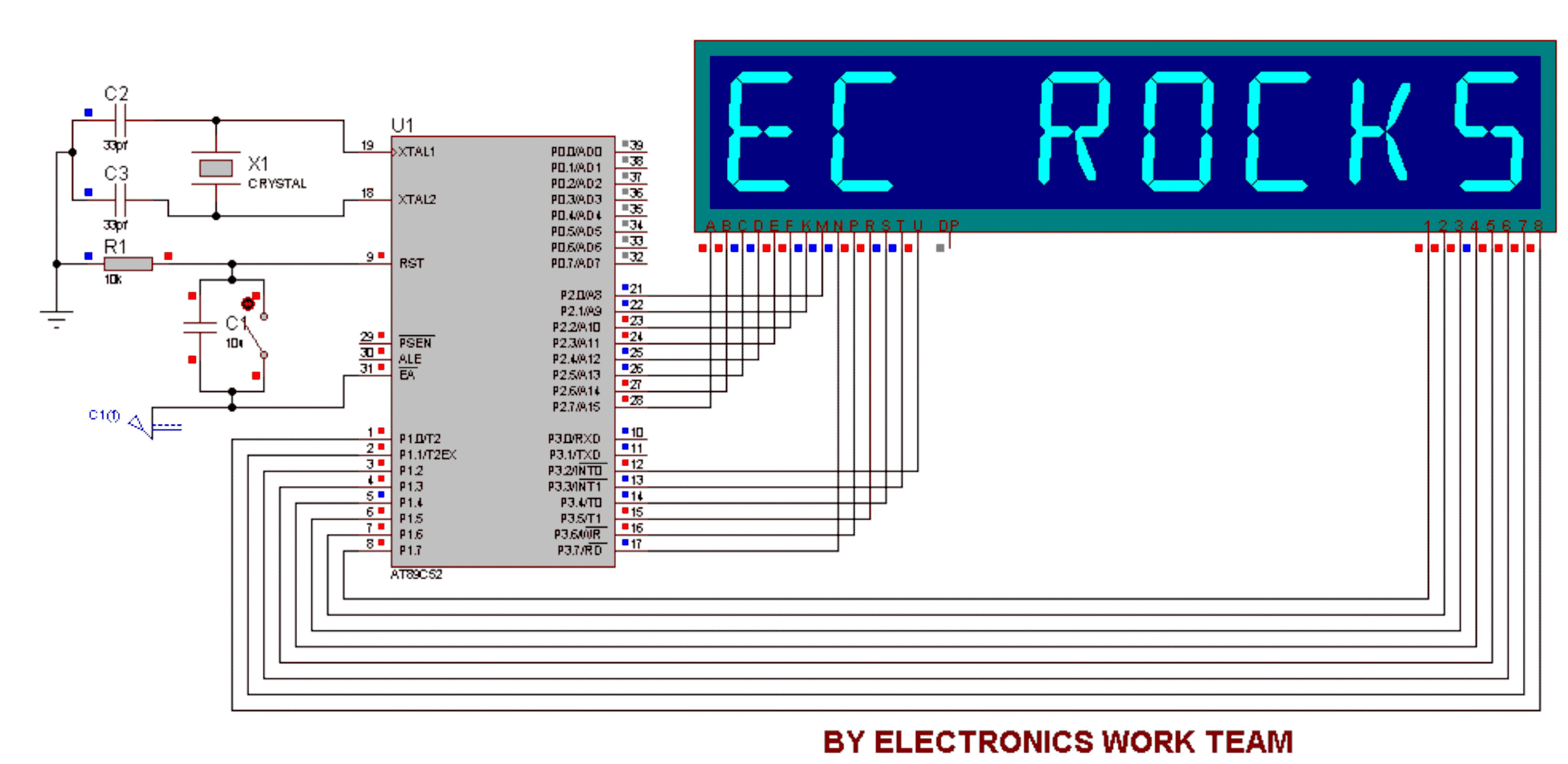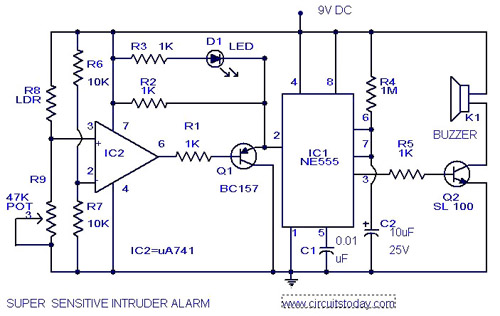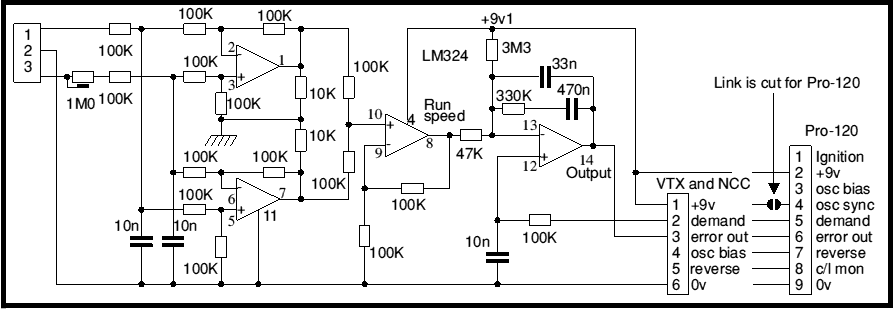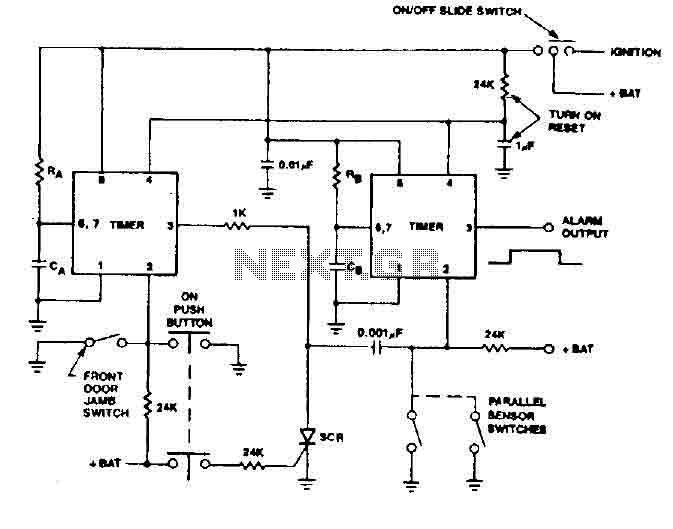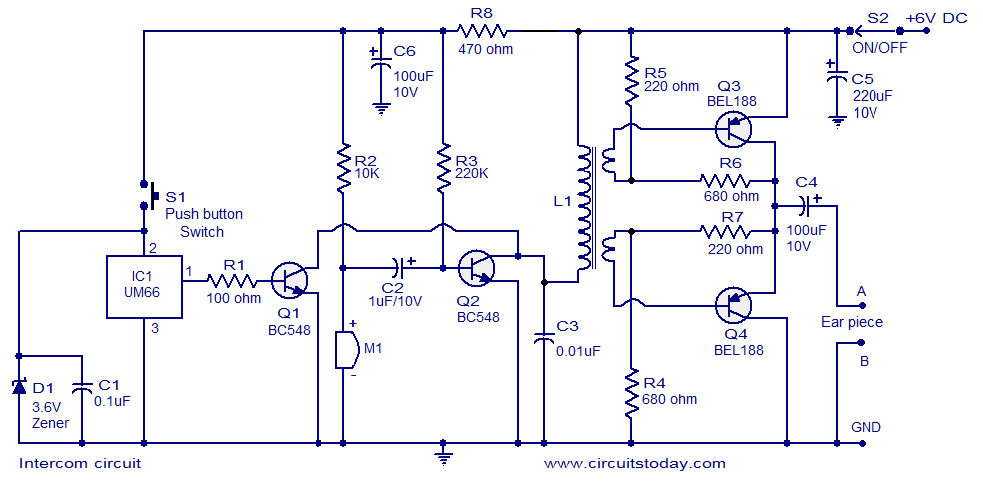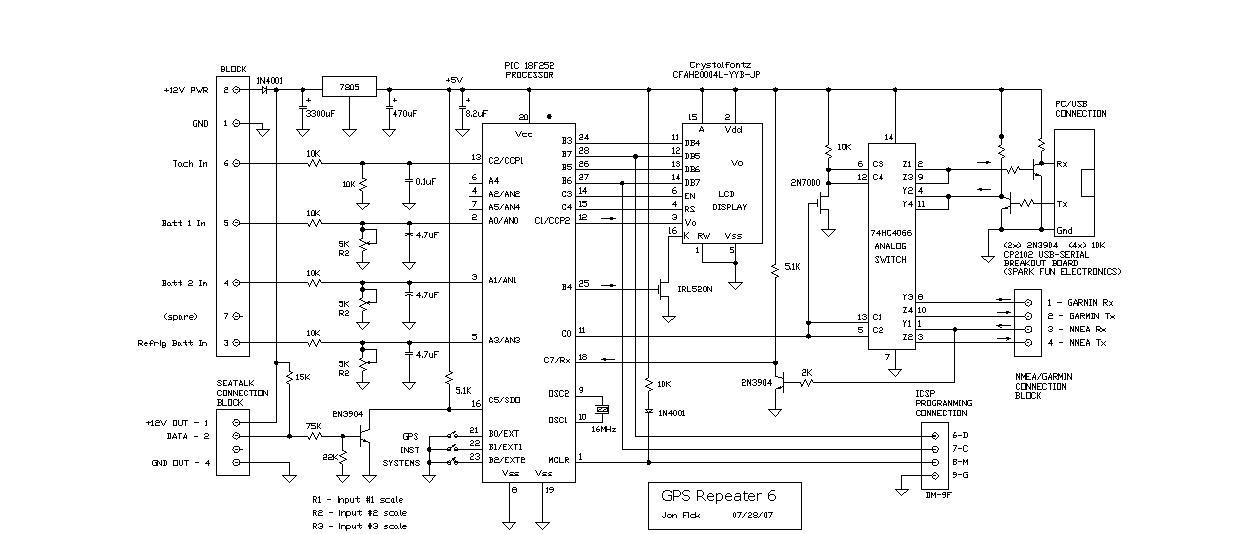
Cellphone Charger Using Bike Battery

This circuit provides a simple and efficient method to draw current from a motorcycle battery to charge a mobile phone. Most mobile phone battery packs consist of three 1.2-volt cells, resulting in a total voltage of 3.6 volts. For optimal charging, each cell requires more than 1.2 volts and adequate current. The circuit is designed to deliver 5 volts at 300 mA for rapid charging. It includes voltage and current regulation, as well as components for polarity and surge protection. A Positive Voltage Regulator IC 7805 is utilized to provide a regulated output of 5 volts. The components surrounding the IC are intended to protect it and ensure smooth output power. The Zener diode (ZD) functions as an input surge protection diode, supplying 7.2 volts to the regulator IC from the 12-volt motorcycle battery. Diode D1 serves as both an output surge and input short protection diode. If a surge voltage that exceeds the maximum voltage rating of the regulator is applied to the input, or if an excessive voltage is applied to the output, the regulator could be damaged. Additionally, if the input terminal shorts to ground, the output voltage may rise above the input voltage, which can also be detrimental to the regulator. The use of the Zener diode at the input and diode D1 across the regulator mitigates these risks. Capacitors C1 and C2 enhance the stability of the regulator and should be soldered close to the regulator's pins. Capacitor C3 acts as a buffer to maintain a constant output voltage.
The circuit is built around a 12-volt motorcycle battery, which serves as the power source. The Positive Voltage Regulator IC 7805 is the core component that regulates the voltage to a stable 5 volts, suitable for charging mobile devices. The input to the regulator is protected by the Zener diode, which clamps the voltage to 7.2 volts, ensuring that the regulator operates within safe limits. The inclusion of diode D1 is crucial as it prevents damage from reverse polarity and protects against voltage surges that could occur during operation.
Capacitors C1 and C2, typically rated at 10µF to 100µF, should be placed as close as possible to the IC to reduce inductive effects and maintain stability during load changes. These capacitors help filter out noise and provide a smoother voltage output. Capacitor C3, often a larger value (e.g., 100µF to 470µF), serves as a reservoir to maintain a steady voltage during transient conditions, ensuring that the mobile device receives a consistent charging voltage.
In summary, this circuit design not only provides a reliable solution for charging mobile phones using a motorcycle battery but also incorporates essential protective features to safeguard the components from potential damage, ensuring longevity and reliability in various operating conditions.This is the simple and easy way to tap current from a Motor Bike battery to charge the Mobile Phone. Most of the Mobile Phone battery pack has three 1. 2 volt cells making the voltage to 3. 6 volts. For fast charging of the battery pack, each cell requires more than 1. 2 volts and sufficient current. This circuit can deliver 5 volts at 300 mA to char ge the battery quickly. The circuit is Voltage and Current regulated and with Polarity and Surge protection components. The circuit uses a Positive Voltage regulator IC 7805 to give 5 volt regulated output. The components around IC1 are meant for protecting the IC so as to give smooth output power. Zener diode ZD act as the Input Surge protecting diode. It provides 7. 2 volts to the input of the regulator IC from the 12 volt bike battery. Diode D1 is the Output Surge and Input Short protecting diode. When a surge voltage exceeding maximum voltage rating of the regulator is applied to the input or when a voltage in excess of the input voltage is applied to the output, the regulator will be destroyed. If the input terminal shorts with the ground, the output voltage increases above the input voltage(ground potential)and the charge in the capacitor connected to the output flows into the input side which is also fatal to the regulator.
Both these situations can be avoided by using the Zener at the input and the diode D1 across the regulator. Capacitor C1 and C2 provide stability to the regulator and these should be soldered close to the legs of the regulator.
Capacitor C3 act as a buffer to give constant voltage in the output. 🔗 External reference
The circuit is built around a 12-volt motorcycle battery, which serves as the power source. The Positive Voltage Regulator IC 7805 is the core component that regulates the voltage to a stable 5 volts, suitable for charging mobile devices. The input to the regulator is protected by the Zener diode, which clamps the voltage to 7.2 volts, ensuring that the regulator operates within safe limits. The inclusion of diode D1 is crucial as it prevents damage from reverse polarity and protects against voltage surges that could occur during operation.
Capacitors C1 and C2, typically rated at 10µF to 100µF, should be placed as close as possible to the IC to reduce inductive effects and maintain stability during load changes. These capacitors help filter out noise and provide a smoother voltage output. Capacitor C3, often a larger value (e.g., 100µF to 470µF), serves as a reservoir to maintain a steady voltage during transient conditions, ensuring that the mobile device receives a consistent charging voltage.
In summary, this circuit design not only provides a reliable solution for charging mobile phones using a motorcycle battery but also incorporates essential protective features to safeguard the components from potential damage, ensuring longevity and reliability in various operating conditions.This is the simple and easy way to tap current from a Motor Bike battery to charge the Mobile Phone. Most of the Mobile Phone battery pack has three 1. 2 volt cells making the voltage to 3. 6 volts. For fast charging of the battery pack, each cell requires more than 1. 2 volts and sufficient current. This circuit can deliver 5 volts at 300 mA to char ge the battery quickly. The circuit is Voltage and Current regulated and with Polarity and Surge protection components. The circuit uses a Positive Voltage regulator IC 7805 to give 5 volt regulated output. The components around IC1 are meant for protecting the IC so as to give smooth output power. Zener diode ZD act as the Input Surge protecting diode. It provides 7. 2 volts to the input of the regulator IC from the 12 volt bike battery. Diode D1 is the Output Surge and Input Short protecting diode. When a surge voltage exceeding maximum voltage rating of the regulator is applied to the input or when a voltage in excess of the input voltage is applied to the output, the regulator will be destroyed. If the input terminal shorts with the ground, the output voltage increases above the input voltage(ground potential)and the charge in the capacitor connected to the output flows into the input side which is also fatal to the regulator.
Both these situations can be avoided by using the Zener at the input and the diode D1 across the regulator. Capacitor C1 and C2 provide stability to the regulator and these should be soldered close to the legs of the regulator.
Capacitor C3 act as a buffer to give constant voltage in the output. 🔗 External reference
Warning: include(partials/cookie-banner.php): Failed to open stream: Permission denied in /var/www/html/nextgr/view-circuit.php on line 713
Warning: include(): Failed opening 'partials/cookie-banner.php' for inclusion (include_path='.:/usr/share/php') in /var/www/html/nextgr/view-circuit.php on line 713
